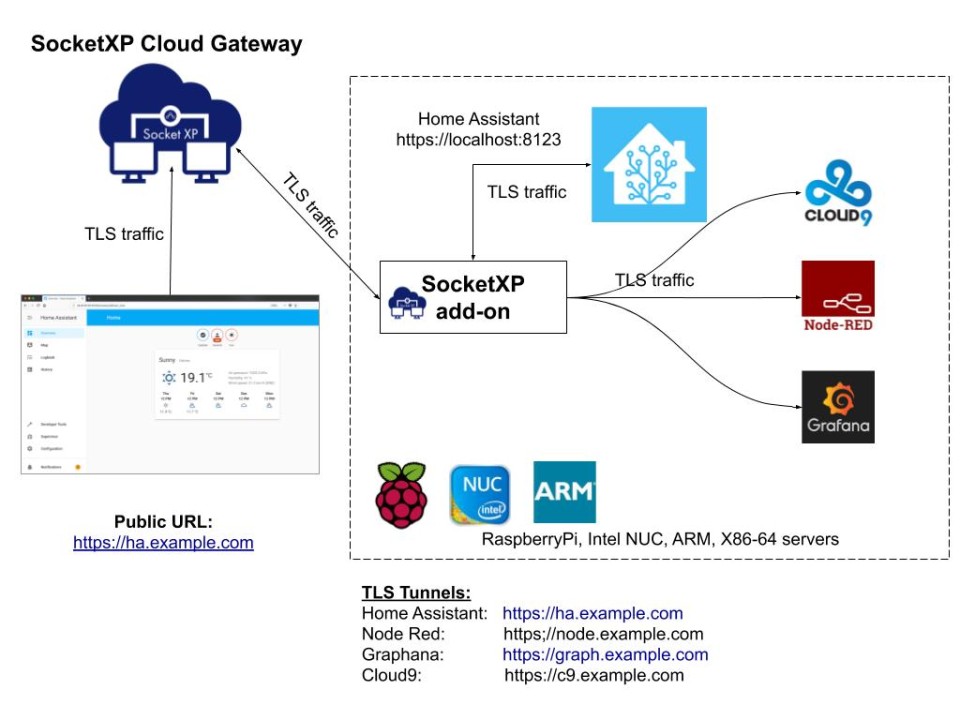SocketXP Alternatives & Competitors: Top Picks & Reviews
Are you tired of the constant juggling of dynamic URLs, especially when working with webhooks or IoT devices? Discovering reliable and cost-effective alternatives to services like ngrok, particularly those offering static URLs, is crucial for streamlining your workflow and enhancing the efficiency of your projects.
The quest for dependable remote access solutions often leads developers and IT professionals down a path of evaluating various platforms. Among the tools available, Socketxp presents itself as a contender, promising secure remote connectivity through secure TLS/SSL tunnels. But, is it the right fit for you? Or are there superior alternatives that offer a more compelling combination of features, pricing, and ease of use?
As the digital landscape expands, the need to expose IoT devices, webhooks, and other services to the internet securely becomes increasingly critical. This necessitates tools that can create secure tunnels, allowing devices to communicate with cloud-based services or remote access points. While services like ngrok have gained popularity, their limitations, such as the need for paid subscriptions for static URLs, often drive users to explore other options.
Let's delve into the world of Socketxp and its competitors. Based on the information available, Datadog, Esper, and Emnify are highlighted as potential alternatives. Additionally, several other platforms like Qbee.io, bensoftware.com, cendio.com, and pinggy.io also come into play.
The discussion surrounding Socketxp often involves comparing its functionalities to similar tools like Sish, which leverages a different technological architecture, namely Caddy+OpenSSH instead of custom server code. For those prioritizing high availability (HA) solutions, it is important to note that Socketxp is not a direct HA alternative.
For those seeking static URLs without incurring costs, the hunt for alternatives to ngrok becomes paramount. The frustration associated with frequently updating URLs due to dynamic changes generated by ngrok underscores the necessity for solutions offering stable, unchanging endpoints.
In February 2025, according to available data, the landscape of Socketxps competitors looked something like this:
| Rank | Competitor | Monthly Visits (February 2025) |
|---|---|---|
| 1 | Qbee.io | 11.4k |
| 2 | bensoftware.com | 24.3k |
| 3 | cendio.com | 24.7k |
| 4 | pinggy.io | [Data not available in this context] |
Source: Similarweb data (as of February 2025). Note: Visit data can vary.
Socketxp positions itself as a lightweight VPN alternative designed to provide remote connectivity via secure TLS or SSL tunnels. It primarily targets developers who are working with webhooks or need to expose IoT devices to the internet. The core functionality involves connecting a device to the Socketxp cloud gateway.
The setup typically involves the following steps:
- Installing the Socketxp IoT agent on your IoT device, Raspberry Pi, or Linux machine.
- The agent establishes a secure connection to the Socketxp IoT cloud gateway using SSL/TLS encryption.
- Accessing the device securely via the Socketxp agent in IoT slave mode.
The command-line interface is a key component. Users connect to the cloud gateway using a command like: `$ socketxp connect tcp://localhost:22`, ensuring that they are connected via a secure SSL/TLS connection. The 'slave mode' allows accessing any service on the device, not just SSH, emulating a local network connection.
For setting up SSH remote access with Socketxp, here's a general overview:
- Install the Socketxp IoT agent.
- Configure the agent to connect to the Socketxp cloud gateway.
- Use the `socketxp connect` command to establish the secure tunnel.
- Access the SSH service via the agent, essentially as if you were on the local network.
Implementing Mutual TLS (mTLS) is highly recommended for enhanced security. The following best practices should be considered:
- Use a trusted Certificate Authority (CA), such as the BastionXP CA, to sign your certificates.
- Keep your certificates updated and rotate them regularly.
- Employ strong and latest encryption algorithms.
For those working with disk images, you can create one with the Socketxp agent already installed. This would involve the following steps:
- Manually install the Socketxp agent on the device.
- Delete the `device.key` file from the device file system.
Consider that the information on alternatives presented has been based on documentation and resources freely available online and was last updated on April 24, 2025. It is important to verify the most up-to-date details.
Socketxp's agent securely connects to the Socketxp IoT cloud gateway via an SSL/TLS tunnel. This secure connection is fundamental to the platform's remote access capabilities. The platform emphasizes security and reliability, employing advanced measures to safeguard data. This includes the use of advanced security measures to ensure your data is always protected.
The platform is cloud native and can scale to meet the demands of a large number of devices. It can support 100,000 or more devices per customer account. For questions regarding customization, the platform offers communication channels where users can inquire about their specific needs.
In practice, you install the Socketxp IoT agent on your IoT or Raspberry Pi device, and then use the `socketxp connect` command along with the appropriate parameters for establishing the connection to the gateway. This allows you to remotely access your device securely.
The slave mode feature allows access to services running on your device, similar to the way you would access them on a local network. This enables convenient management of devices and services from a remote location.
The focus on security is a key differentiator for Socketxp. The utilization of secure TLS/SSL tunnels, the recommendations for mTLS best practices, and the emphasis on reliable remote access make it a viable option for developers and organizations with specific needs. The platform is designed to provide robust security for your data.
If you are seeking an alternative to ngrok, you are likely searching for a service that offers static URLs for free or at a lower cost. The ability to maintain constant URLs is a major advantage, particularly for applications that need to reliably interact with external services and systems.
The challenges of repeatedly updating URLs generated by ngrok highlight the need for stable and unchanging endpoints. The frustration of this process drives many users to seek alternative solutions. The need for static URLs becomes even more important if you are working with webhooks or need to expose services for integrations.
The core functionality revolves around providing remote connectivity using secure TLS or SSL tunnels. This is achieved by connecting devices to the Socketxp cloud gateway. The method of connecting uses a secure SSL/TLS connection.
The team behind Socketxp is dedicated to providing optimal service and support to users. By focusing on security and reliability, the platform aims to deliver a dependable remote access experience. For those needing to expose IoT devices, webhooks, or other services to the internet, having secure, reliable connections is essential. Services such as Socketxp aim to solve these challenges.



